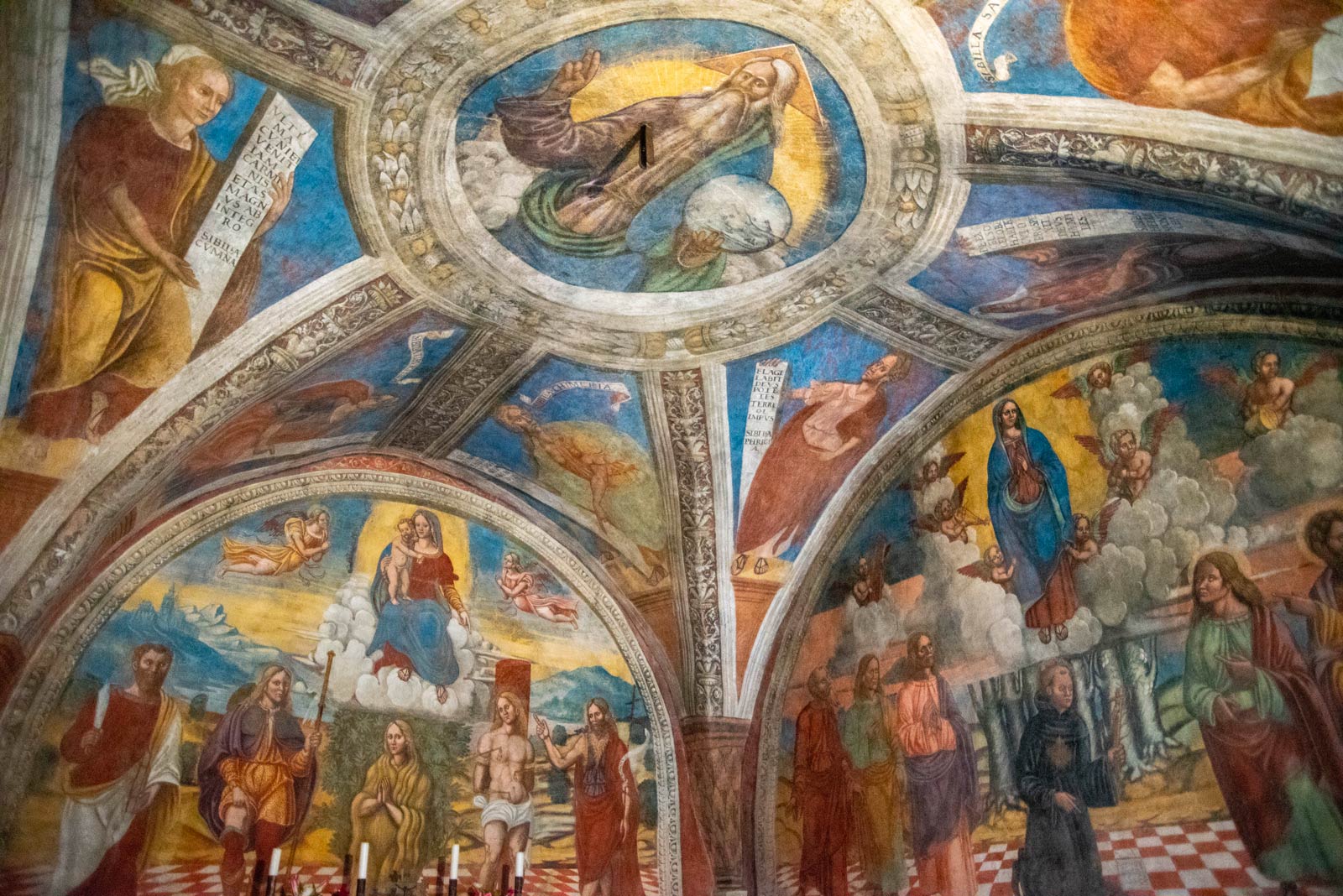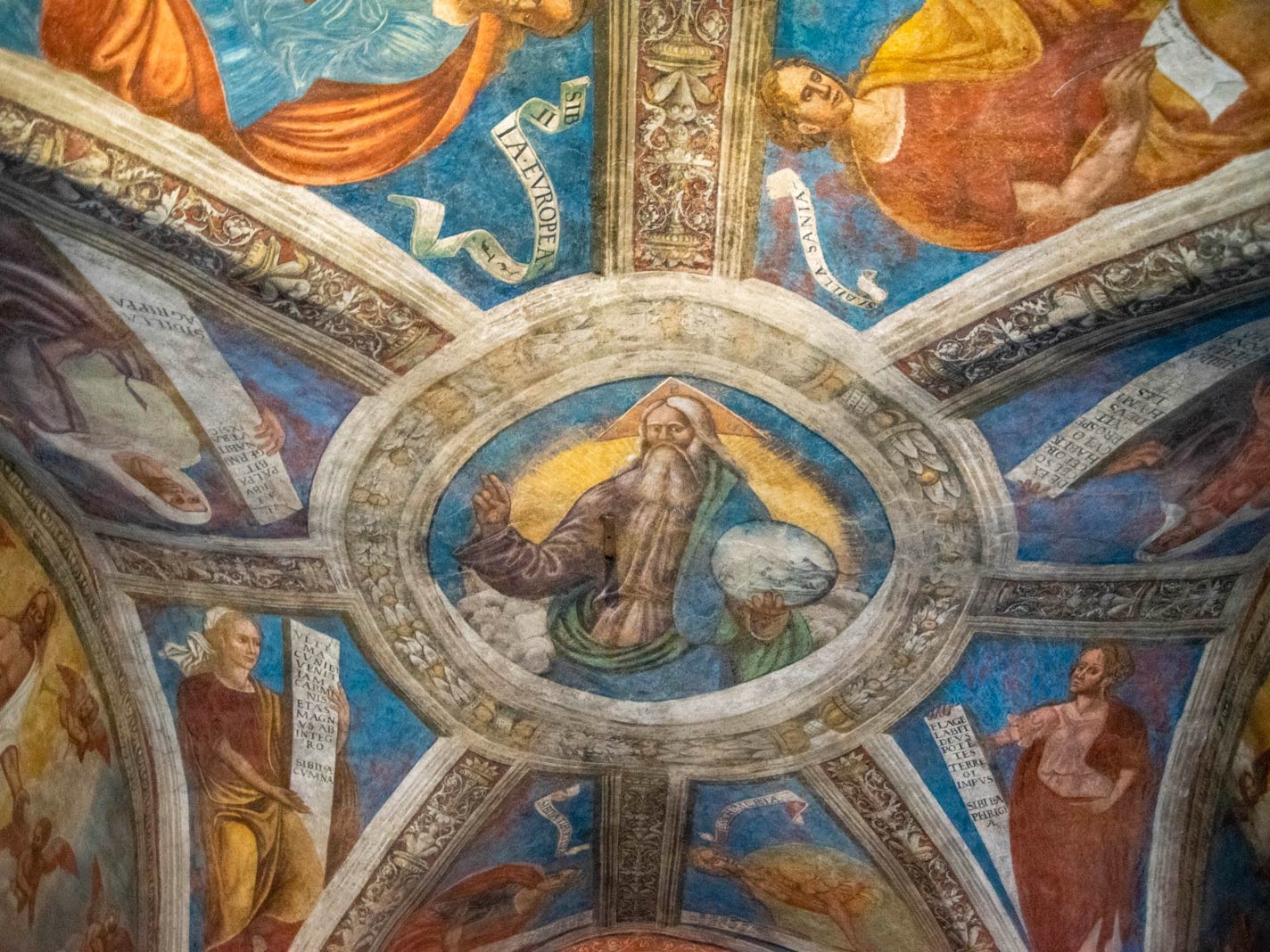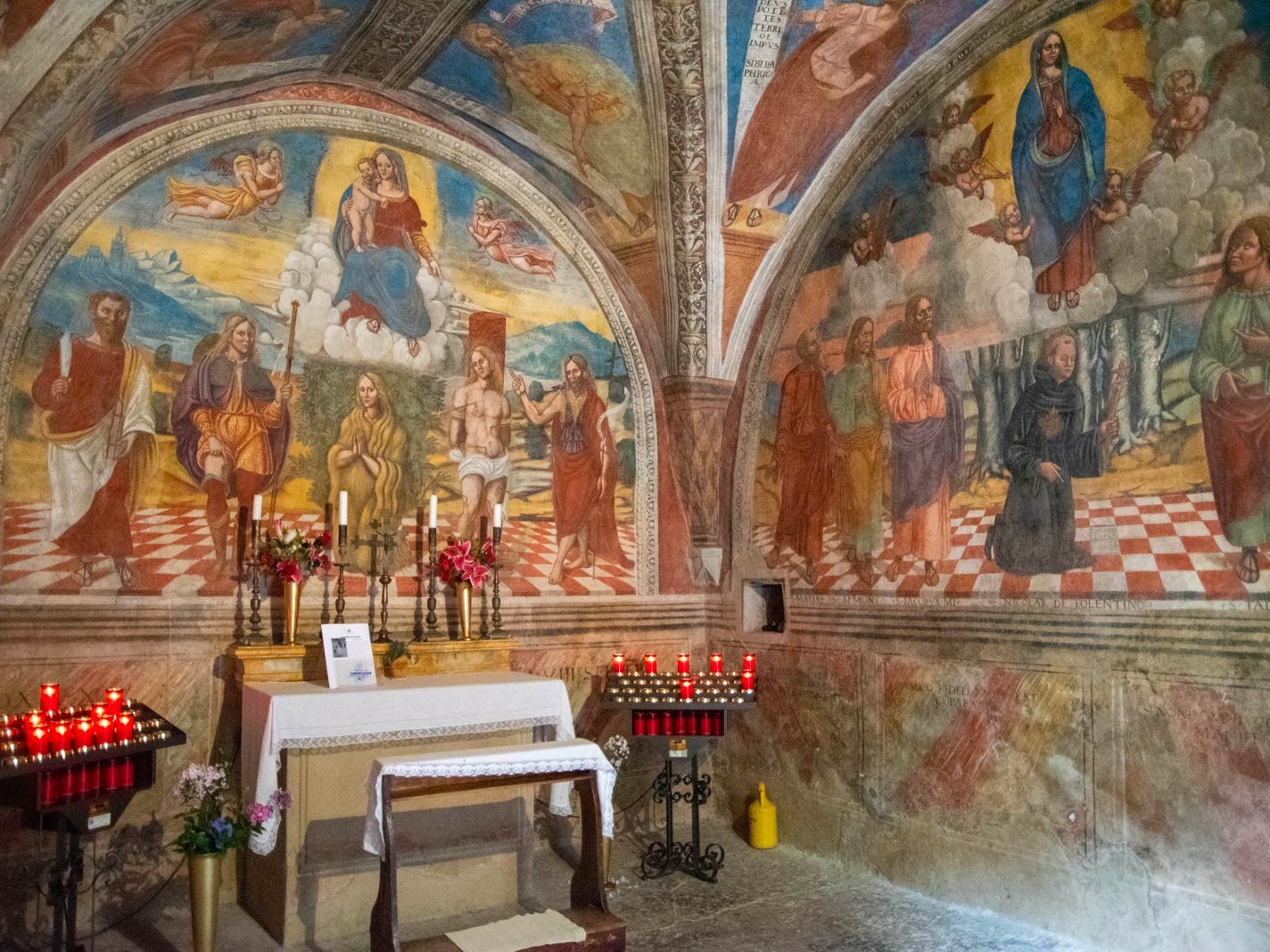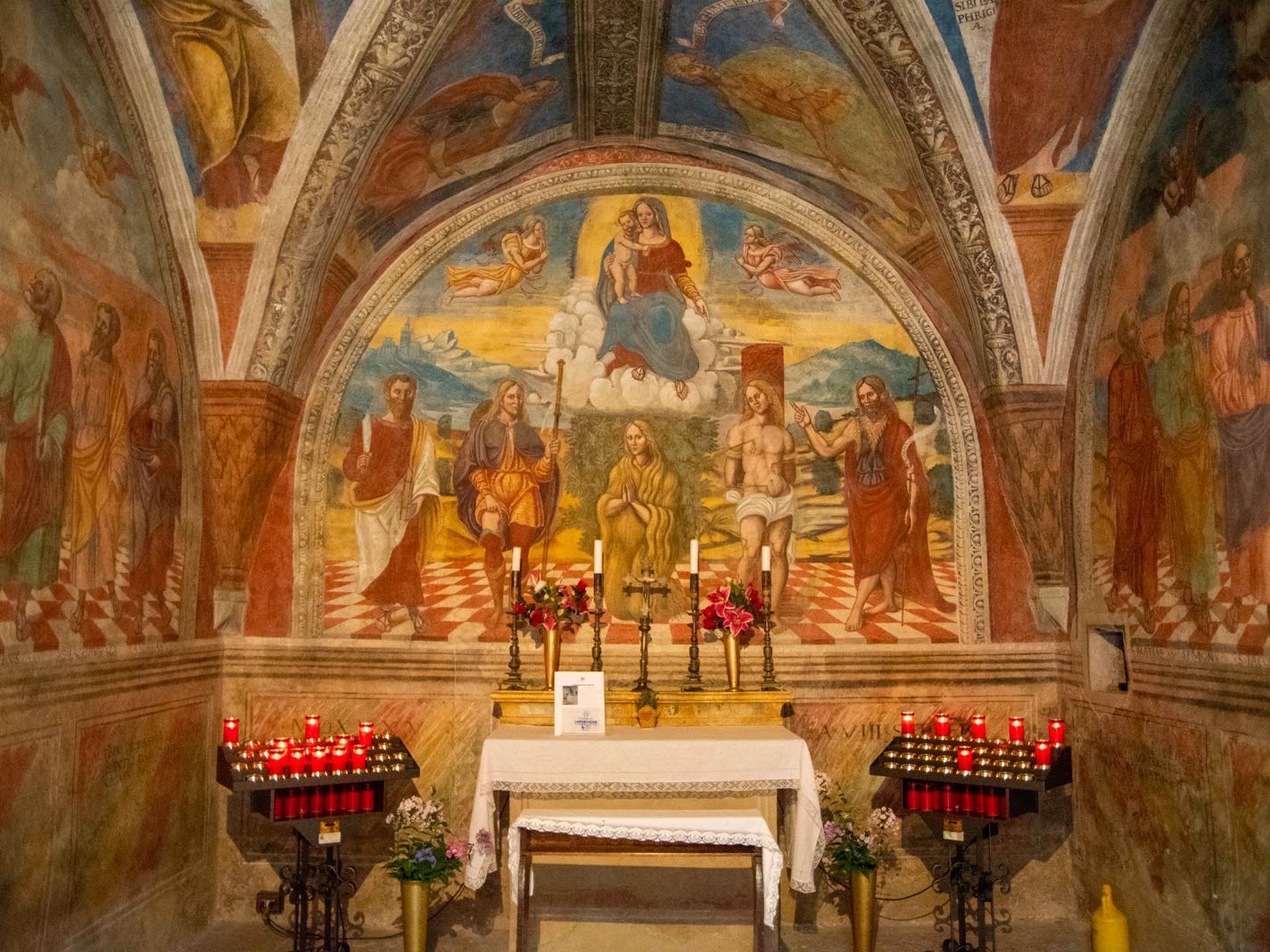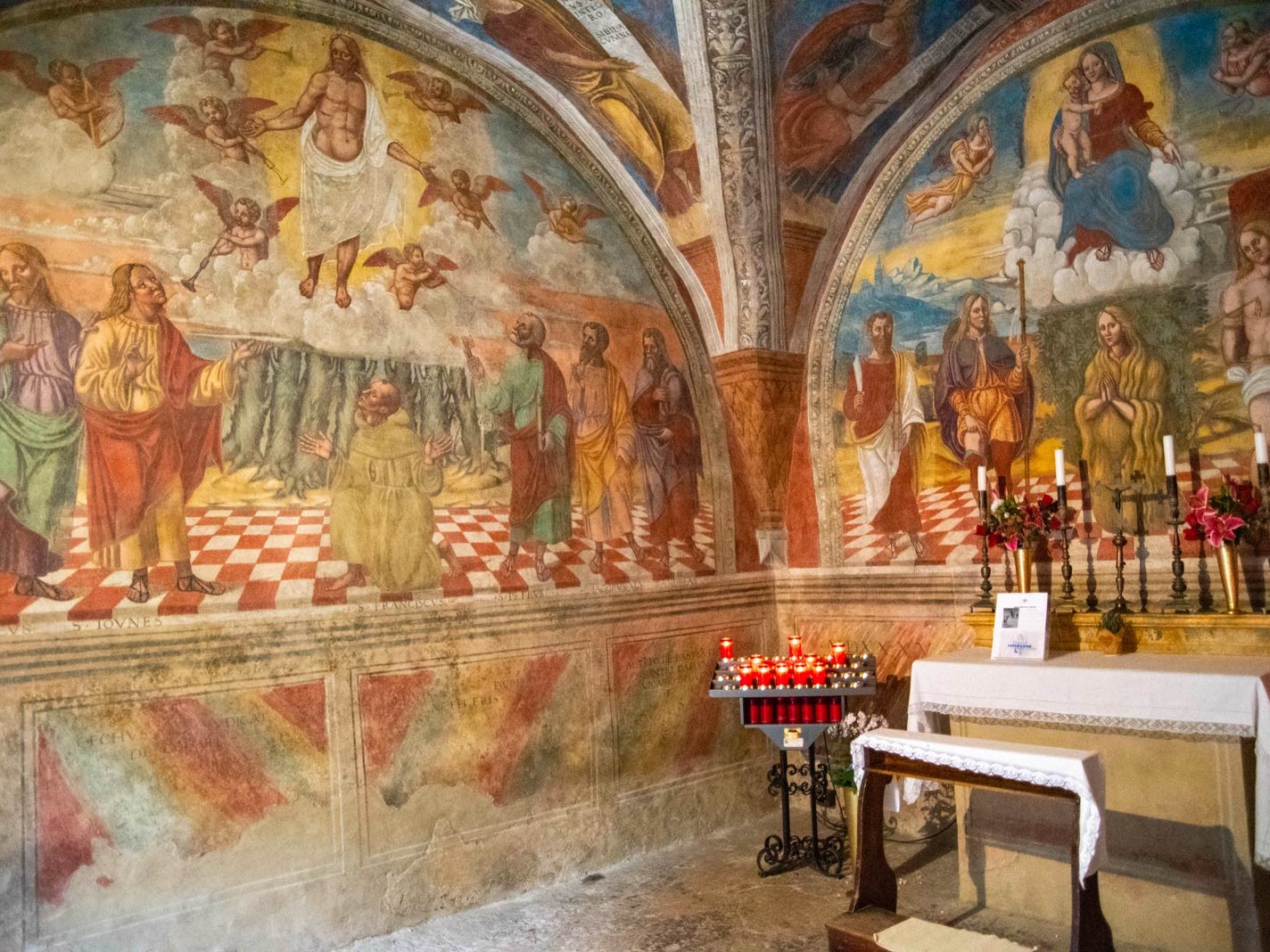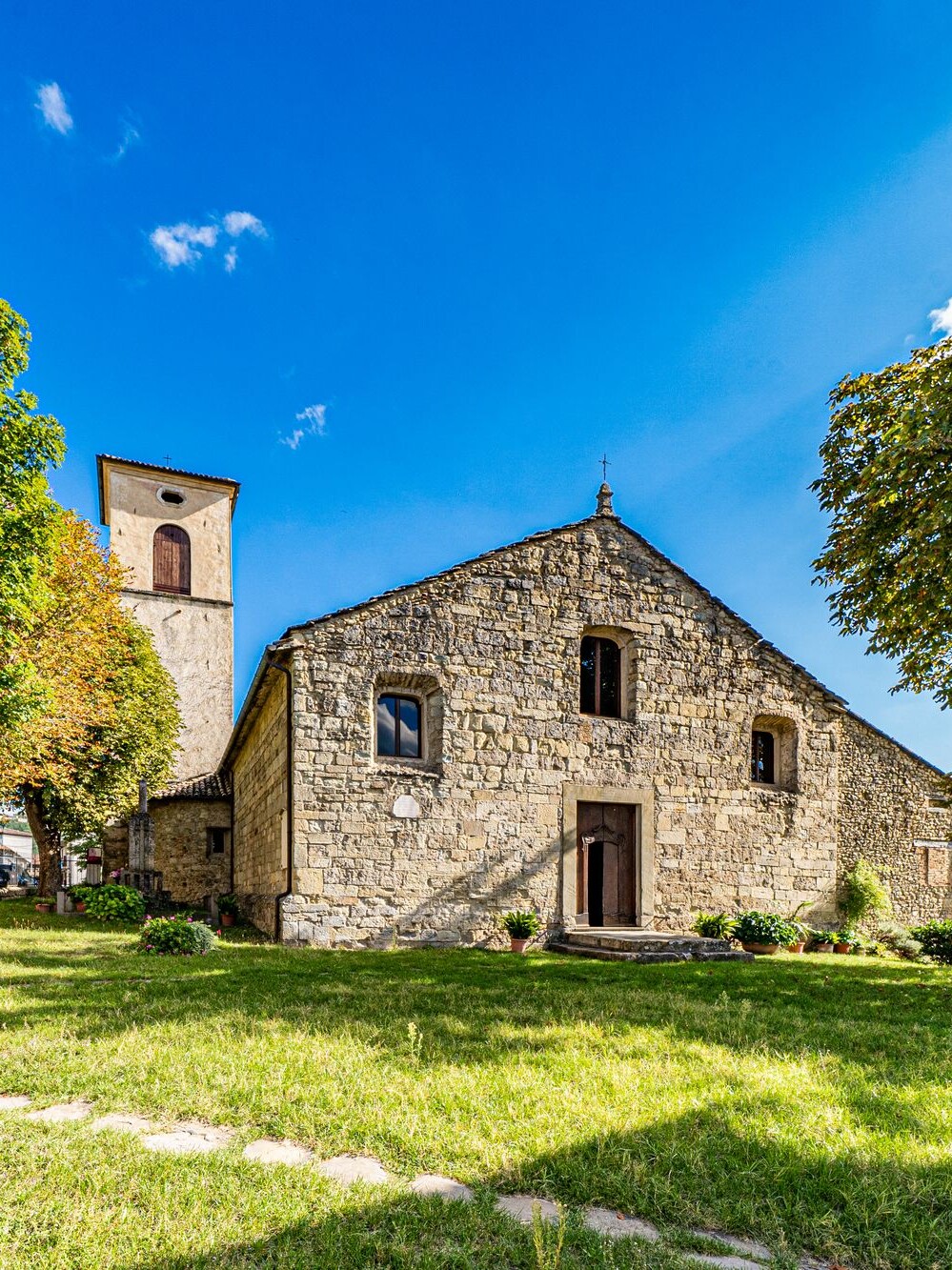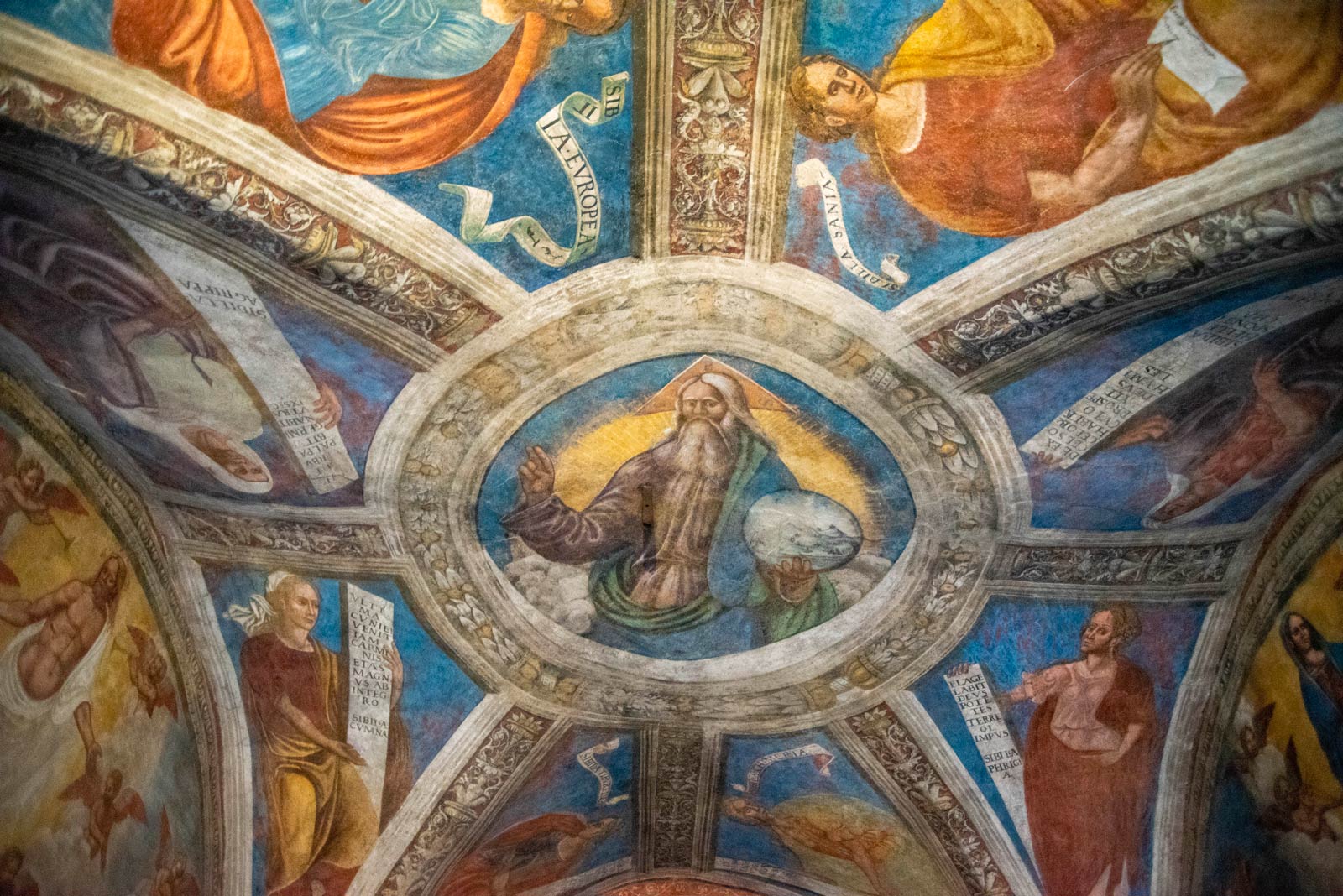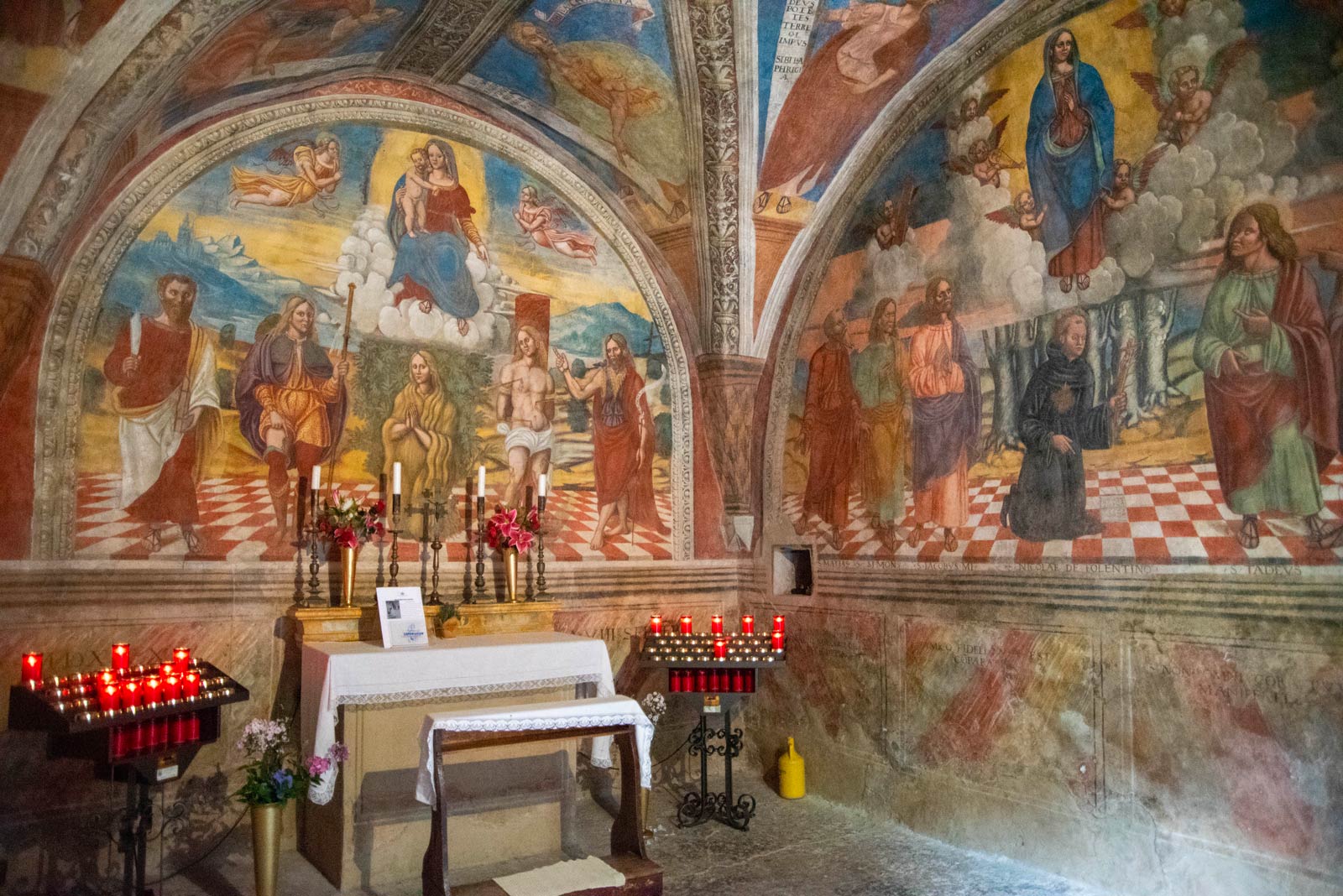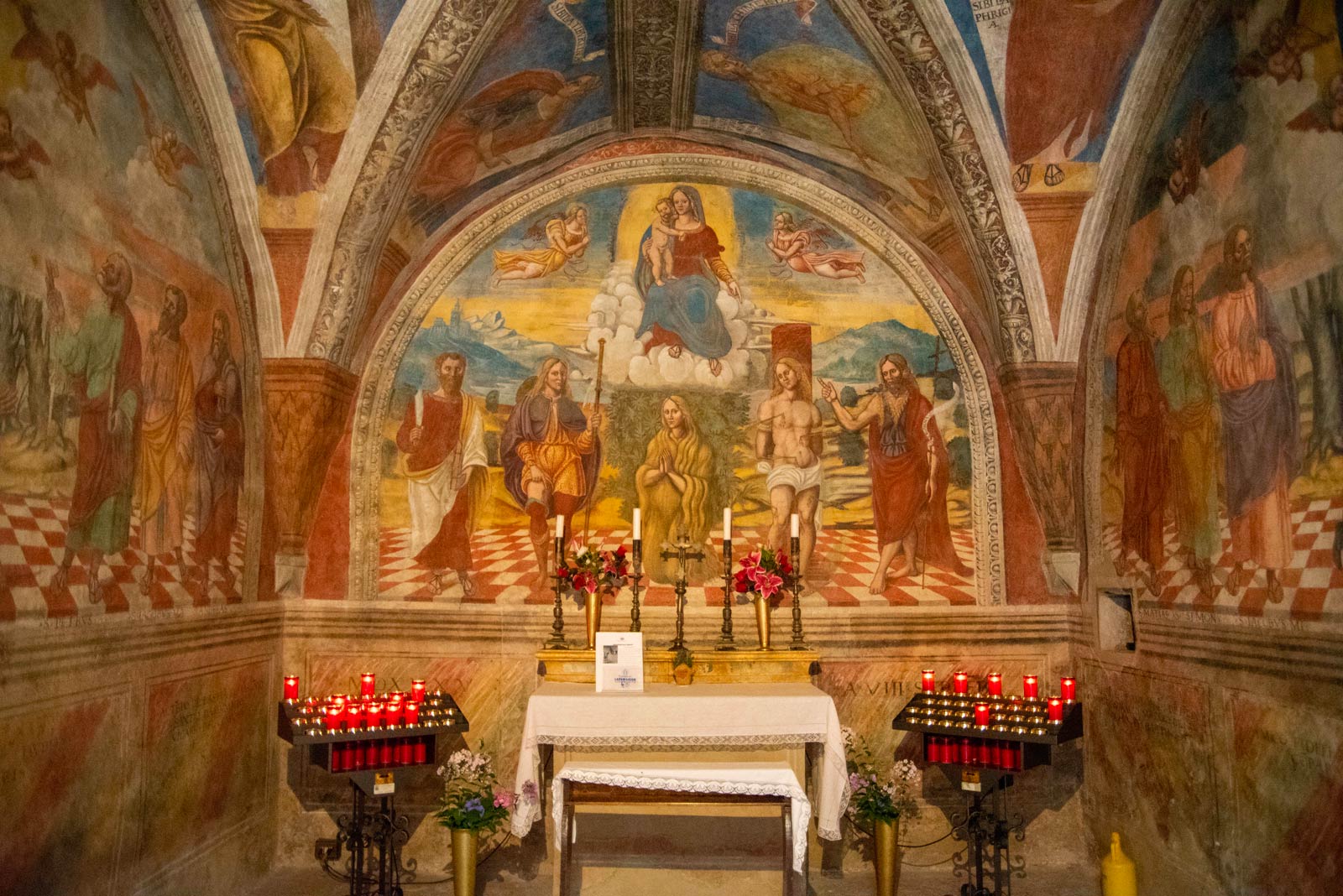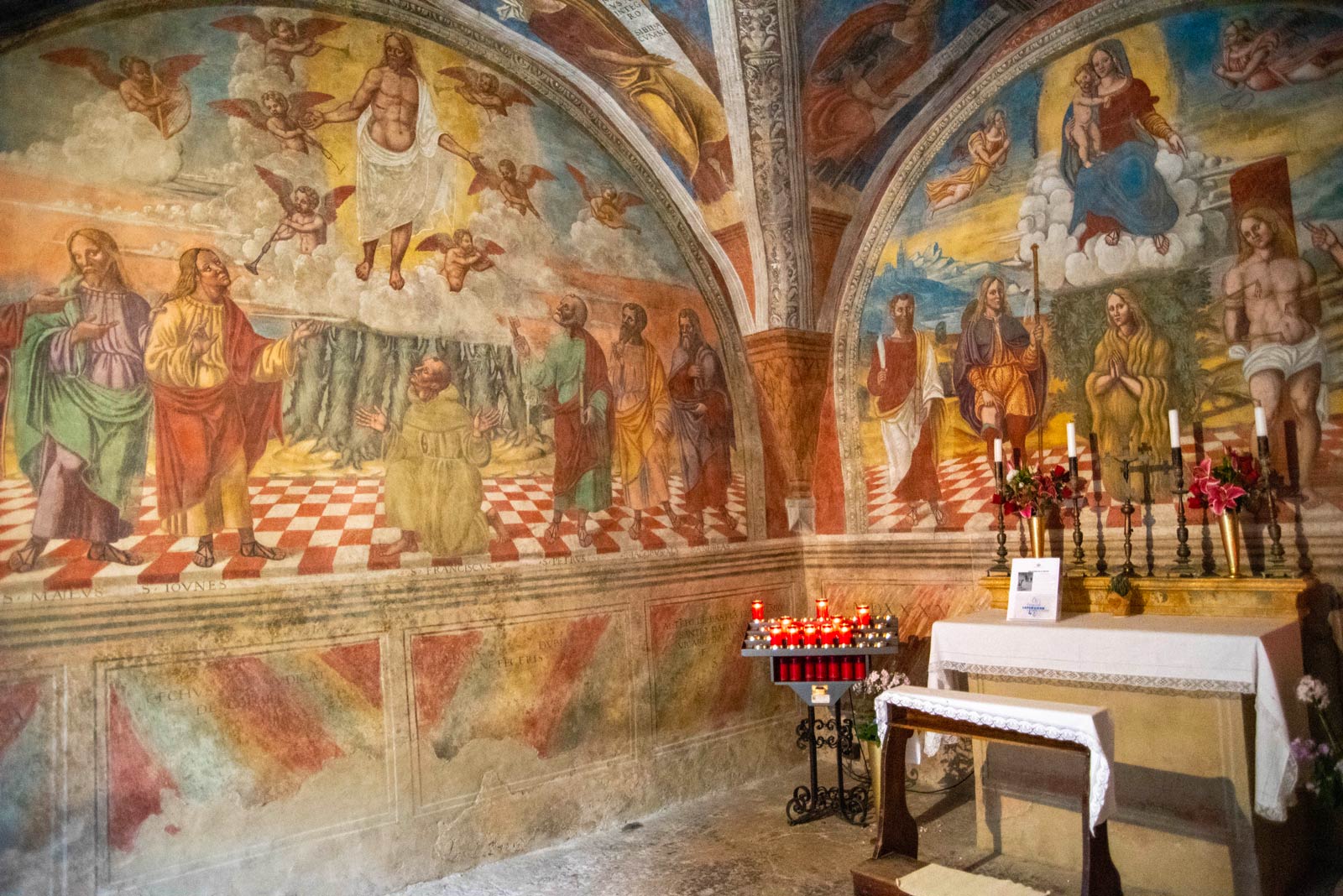At the entrance to the historic centre of Fiumalbo there stands a Renaissance oratory which is definitely worth visiting.
The original church built in honour of the saint goes back to 1418, but the present-day building dates to the first half of the 16th century, and features clearly ‘Tuscan Renaissance’ characteristics.
The interior, frescoed in 1535 by the Carpi painter Saccacini, is of particular interest.
An Oratory dedicated to St Roch standing at the entrance of the village, is recorded as far back as 1418. This local custom, typical of the area, was intended to ward off epidemics and prevent outbreaks of the plague from entering the town; it can also be found in other municipalities of the Modena Apennines.
The church was originally smaller in size, and built in a more rustic style of architecture.
The building underwent considerable change in the early 16th century, when it was enlarged to its current size.
With its perfect ashlar facing made of sandstone blocks cut in elegant Renaissance proportions, several of its decorative architectural elements bring to mind similar stonework in the Church of Saint Bartholomew, such as the entrance archway decorated with ovules.
The interior, with its cross-vault ceiling, is entirely covered with frescoes, painted in August 1535 by Saccaccino Saccaccini da Carpi, who is known only for this pictorial cycle.
The figurative cycle is very special in that it features two separate epigraphs which mention the town council finance officer and the steward of the Church of Saint Roch, demonstrating how the civil and religious communities of Fiumalbo were united.
Also rather curious is the series of Latin sayings and proverbs which can be seen on the faux-marble wainscoting on the central wall.
Above the altar can be seen the Virgin and Child in Glory with, below, five saints: Bartholomew, Roch, Mary Magdalene, Sebastian and John the Baptist.
On the left wall is a portrayal of the Ascension of Jesus, along with a group of Apostles, and, on the right, the Assumption of Mary and other Apostles.
In the centre of the vaulted ceiling can be seen the Eternal Father, with eight Sibyls in the surrounding sections.
This is a provincial painting carried out with an original, lively expressive language combined with references to the 15th-century Umbrian-Emilian style and a wider Renaissance spatial dimension. Some cultural references, such as the unusual presence of the sibyls and the architectural structure they are inserted in, indicate an interest in form, space and iconography already more typical of the 6th-century.
Extensive restoration work carried out in 1978 brought the interior back to its original state, with the frescoes cleaned and restored.
The more recent paved floor was taken out, bringing to light the original floor made of “cocciopesto” (a mortar consisting of lime and fragments of broken terracotta), which lay below; the spatial dimension of the oratory was thus reconstructed and, consequently, the frescoes themselves were brought into the correct perspective view.
